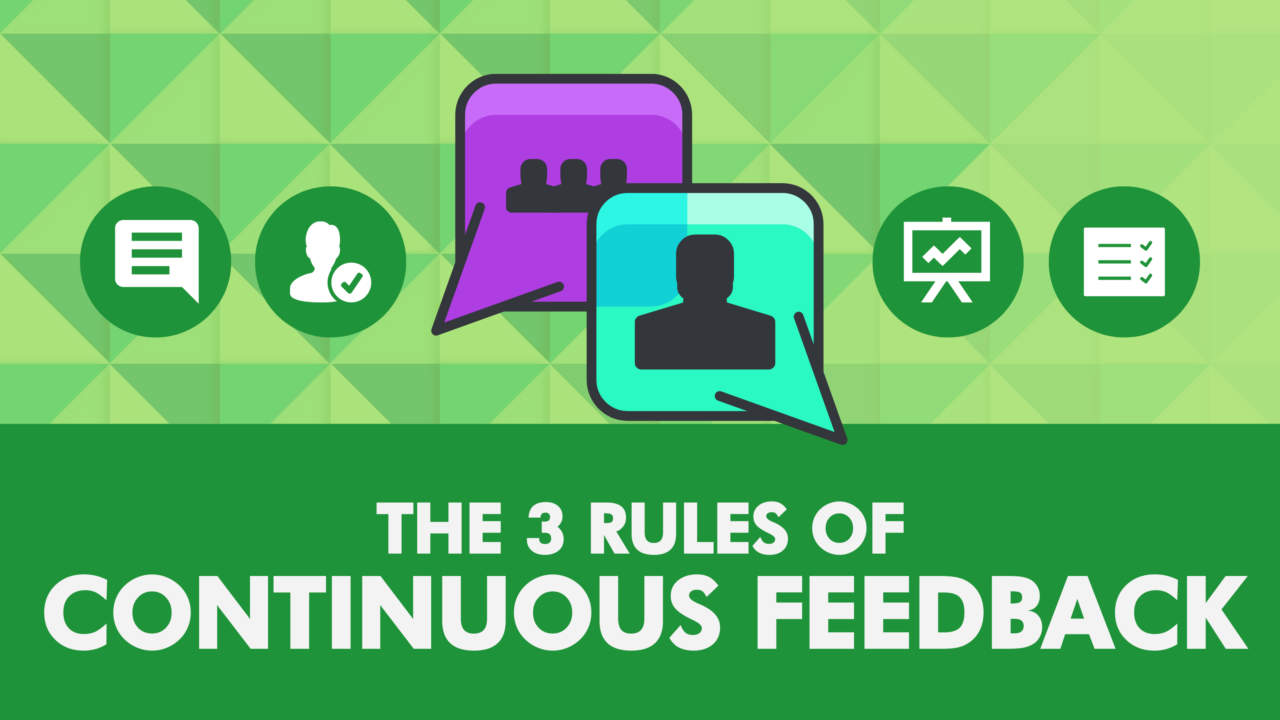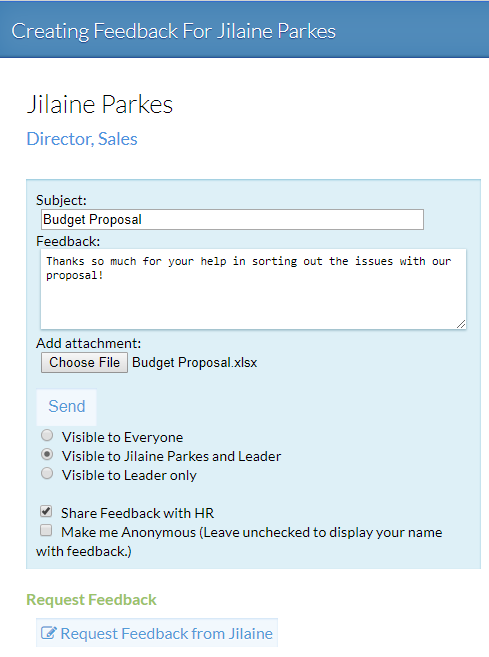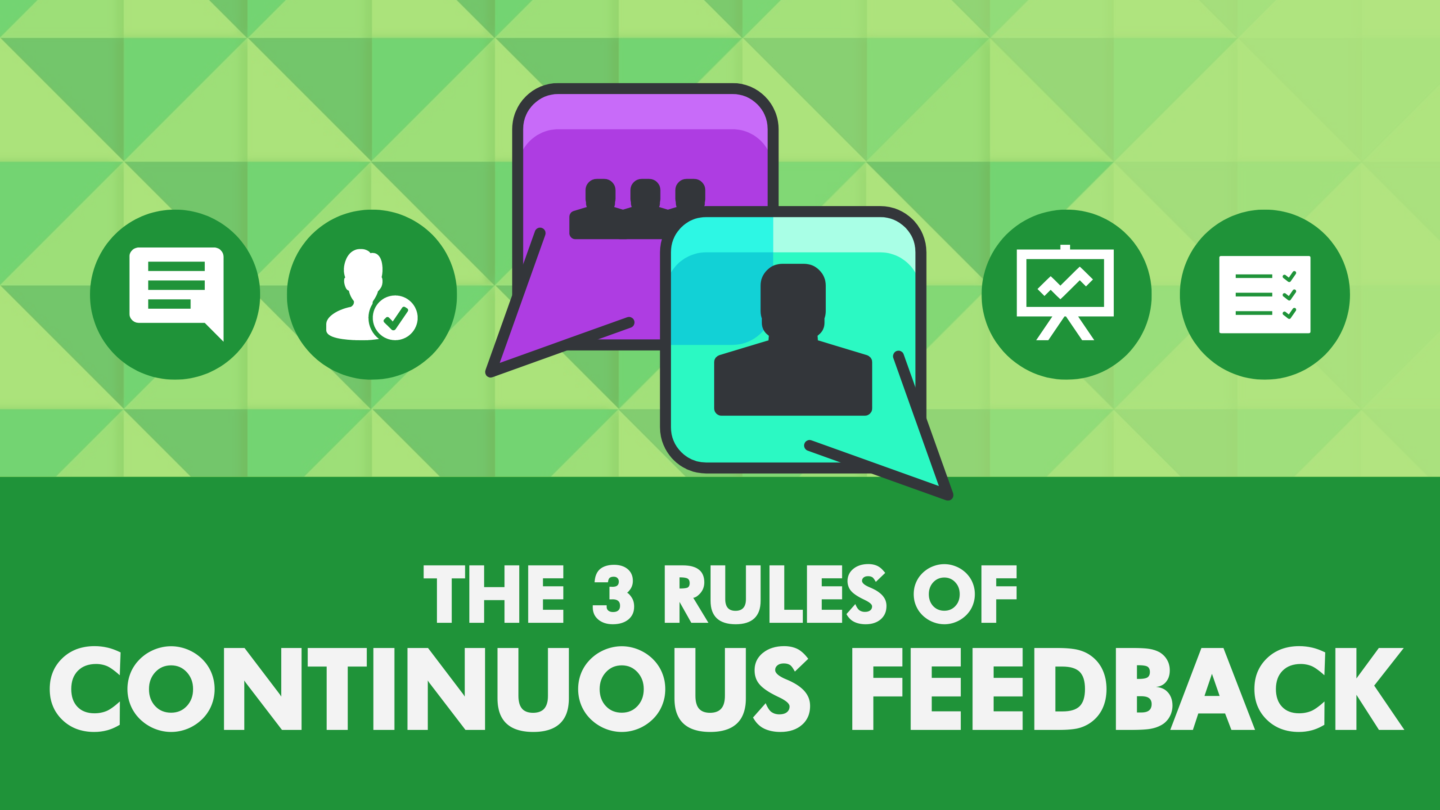
The 3 Rules of Continuous Feedback
The Importance of Continuous Feedback
Workplace dynamics and expectations are constantly evolving over time, and so too should your approach to managing employees. With the increased prevalence of Millennials (typically born 1981 to 1996) in the workplace, a notable shift in core values is evident. One of Millennials’ major expectations is to receive regular, continuous feedback.
But don't take our word for it...
99% believe feedback is important
According to a study by PWC, Millennials...
“...welcome and expect detailed, regular feedback and praise for a job well done - 51% of those questioned said feedback should be given very frequently or continually on the job and only 1% said feedback was not important to them.”
Feedback is important to essentially all employees, and at least half specifically stated that they desire continuous feedback.
85% want more frequent performance conversations
More alarmingly, according to a study by Trinet...
“...69 percent of Millennials, see their company’s review process as flawed…”
But...
“they also depend on it for their professional growth and development.”
Their data strongly vouches for continuous feedback, stating that...
“...85 percent would feel more confident in their current position if they could have more frequent performance conversations with their manager.”
Continuous feedback was among the top updates that surveyed employees wished to see added to their performance review process.

If you’re looking to normalize continuous feedback in your company’s performance management practices, it’s the right move. Take a look at these three rules to keep regular feedback manageable and effective for your business.
Rule 1. Do away with linear thinking.
Historically, when feedback did exist in the workplace, it flowed in one direction. Managers told their employees what their goals were, and those employees either met them or they didn’t. In contrast, continuous feedback works best as an ongoing conversation between the manager and their team – and some of that feedback flows upwards to reflect on the manager’s own performance or workflow prioritization.
Going back to Trinet’s study, a number of employees indicated support for...
“An open dialogue, given that 32 percent dislike when reviews don’t allow employees to share thoughts on their own performance.”
The nature of continuous feedback itself is also non-linear. Instead of a goal’s “finish line,” continuous feedback is a cyclical process, where together, employees and their managers keep establishing new baselines of performance. It allows for employees to continuously improve, while adjusting for all kinds of variables that could be impacting their work.
Rule 2: Keep the annual review.
While it’s easy to fall into a false equivalency trap that annual performance reviews can be replaced by continuous feedback, it’s better to think of check-in meetings as improving on the annual review.
By being timely with feedback, managers can course-correct an employee who’s in danger of losing their way, or give instant kudos to someone who really deserves it. Plus, a bank of ongoing feedback means that come annual review time, that meeting becomes a discussion on where to go, as both manager and staff members are already on the same page regarding how they’ve performed over the year.
Another major issue that employees surveyed by Trinet had with their current performance review process…
“40 percent feel their current feedback is too vague.”
By practicing continuous feedback and having a record of ongoing conversations, it becomes much easier for managers to provide more specific feedback, which is mutually beneficial to both employees and their manager.

Rule 3: Use technology to help.
The move towards continuous feedback in the office is being driven by Millennial workers who demand high engagement from their employers. Meet them where they are with technological solutions that enable feedback to come in frequently, on the digital platforms they’re accustomed to, including mobile devices.
If you expect resistance to a tech-focused move from older generations in the office, explain the myriad benefits of participating, from improved performance to the ability to track those improvements, resulting in better performance and more accurate compensation.
You can also remind managers that technology enables continuous feedback and thereby helps to eliminate the negative consequences associated with holding just one annual performance review. What negative consequences you ask? Trinet's study showed that Millennials have reacted to an annual performance review by...
- 28% looking for a new job
- 15% cursing or crying
- 22% were so anxious about the review they called in sick.
Continuous Feedback in Practice
At SpriggHR, we believe that continuous feedback is a crucial part of optimizing employee performance and overall workplace productivity.
For this reason, continuous feedback is one of our six core solutions.
SpriggHR software allows both managers and employees to give, receive and request feedback at any time! Users are able to engage in ongoing performance conversations that can include individuals or entire teams. Users may opt to attach a file to their feedback, customize who will be able to view the feedback, send a copy to their HR representative, and even submit feedback anonymously!

This feature facilitates and encourages the practice of continuous feedback. When performance management is a conversation and everyone has an active voice, the result is a cohesive team and an organization that is always on the same page.
Continuous feedback promotes a more engaged workforce and better relationships between managers and direct reports, so why not start?
Interested in learning more about how SpriggHR handles continuous feedback?
We would love to introduce you to Sprigg. Hit the “Request a Demo” button and we'll customize a demo just for you, led by one of our senior HR professionals. We look forward to connecting!




